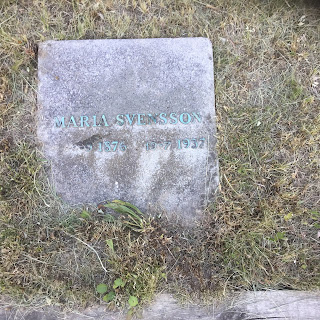This evening sees us parked in a quiet little lane just outside the university city of Lund. We are now in Sweden, where at 23 degrees the weather is nothing like it was portrayed in The Girl With the Dragon Tattoo. We had the same experience in Copenhagen where, having watched The Killing, we had assumed it was dark all year around. We are sat next to a beautiful old windmill which ground corn here between the 1890s and 1950. Now, the grounds are a picnic area while the mill itself doubles as a cafe run by a local youth organisation, although it only functions as such for a few summer Saturdays a year.
 |
| This is the bridge where the body was found in The Bridge |
The remaining 5 miles does cross a spectacular bridge, the longest combined rail and road bridge in Europe. With the two crossings, and the Channel Tunnel, it is now possible to drive from Lancashire to the Arctic Circle without going anywhere near a ferry, which suits me very well.
We overnighted in a marina, not far from the crossing which gave us a chance to amble into the small
 |
| Pretty stunning...the bridge is nice too |
There was little to detain us in the shopping centre other than our introduction to a Systembolaget, one of the chain of Swedish state-owned off licences. It turns out that only weak beer (less than 3.5% alcohol) and so called 'folk beer' can be sold in supermarkets. Stronger beer, wine and spirits is only available at the state outlets. Actually the range of wine they stocked was remarkably good and the prices comparable with the UK. I have to say I was intrigued by the idea of 'folk beer' which conjured up images of someone up in the frozen north, brewing up a mixture of reindeer droppings in a giant cauldron. I may be mistaken about this of course.
 |
| So much space, so little time |
The next morning we visited a designated dog play area next to the marina.With temperatures
forecast to hit 18 degrees by 7 am we decided to get out early with the spaniels for a game of ball. We were prepared for the usual few square yards of turf but this one must have been at least 4 acres. The morning was only marred by a German Shepherd that picked up Max's ball and refused to return it even to his owner. Twenty minutes was enough before both spaniels were seeking a shady spot so we headed back to the van for breakfast.
 |
| Bit of Tudor style in Lund |
Avid readers of this blog will recall that we had arranged to pick up a new cover for our water heater outlet but despite being assured by the dealer that it would be with them by the time we got there it wasn't. Instead we drove to Lund, a lovely little city which boasts a major university, one of whose former students was the famous botanist Carl Linnaeus. It also has many old buildings and a street pattern dating back to the 14th century. The settlement itself is much older than that, so old in fact that it was actually relocated from a spot three miles away by the Danish king Sveyn Forkbeard in around 990 AD. Presumably he preferred the view.
 |
| Lund is well worth a visit |
By mid-afternoon, having heard nothing from the caravan dealer about our cowl cover, we decided to hang around in the area to see if it turned up tomorrow before we headed north. Hence our arrival at the quiet little spot where I am writing this. The only excitement has been the arrival of a police car containing three of Sweden's finest. They were very nice and polite polis. For some reason they spent a few minutes round the back of the windmill before disappearing again. One of them was also kind enough to find the sunglasses I had left on the picnic table.
 |
| The only memorials for the asylum inmates |
Between her burial and 1950, when the cemetery ceased to be used, around 2,000 people joined her. There was little ceremony. They were carried to the grave in black coffins made in the asylum workshop. The only grave marker was a metal rod made by the local blacksmith with a top supposedly representing a bouquet of flowers, although it is now difficult to see that.
On the marker was engraved the name of the deceased and their file number on the asylum books. Some relatives did put up headstones but these are rare. Most of the cemetery is overgrown although the middle section has been cut back so you can walk among the graves. Considering the backgrounds of the individuals buried there, it was quite a sobering experience.
 |


Oh my Goodness! I hadn't realized people with mental illness were buried in a separate graveyard. :(
ReplyDelete